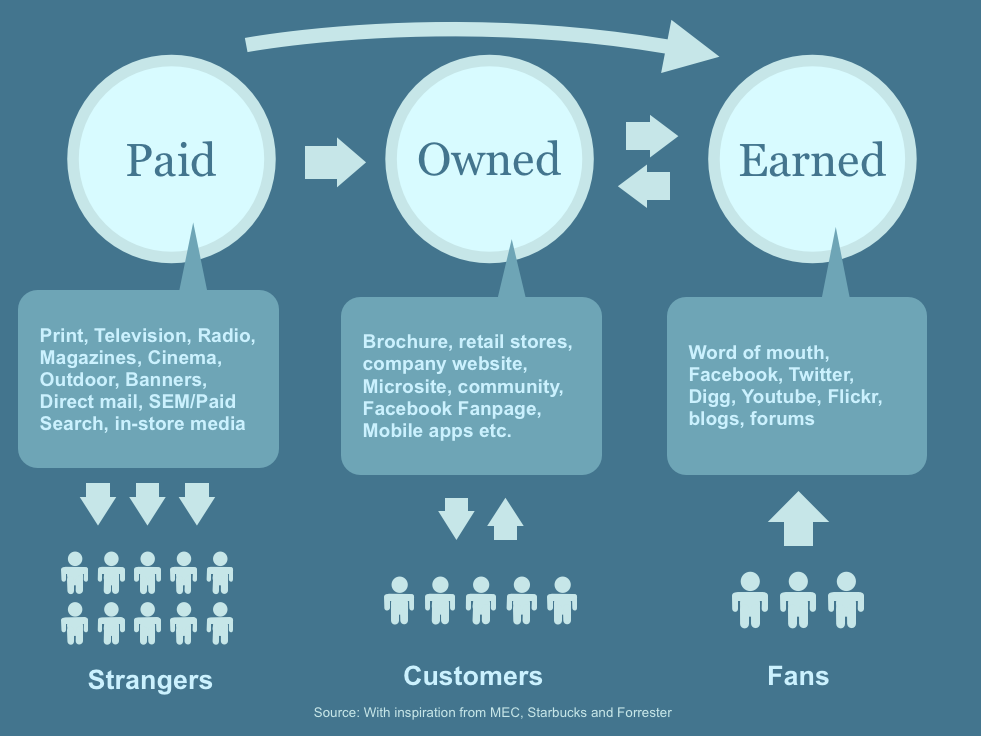Courtesy of fedobe
What is the difference between Integrated Marketing Communication and Content Marketing? Why is Content Marketing taking the world by storm?
The old paradigm of Integrated Marketing Communication (or IMC) is dying. In a world fragmented by zillions of online, mobile and offline channels, consumers are tuning out advertisements faster than you can produce them. With endless “ad-free” options to choose from, nobody wants to be interrupted by your brand anymore.
What can marketers do in such a landscape?
Content Marketing Defined
Enter Content Marketing.
According to the Content Marketing Institute…
Content marketing is the marketing and business process for creating and distributing relevant and valuable content to attract, acquire, and engage a clearly defined and understood target audience – with the objective of driving profitable customer action.
A content marketing strategy can leverage all story channels (print, online, in-person, mobile, social, etc.), be employed at any and all stages of the buying process, from attention-oriented strategies to retention and loyalty strategies, and include multiple buying groups.
Now wait a minute. Haven’t we already done that through our various IMC campaigns?
After all, we do have various advertisements in newspapers, television channels and social networks, coupled with a press release, a niftily designed website, and an awesome promotion on Facebook.
Understanding Paid, Owned and Earned Media
Before I go further, let us consider the three forms of “media” in which content can be disseminated, namely: paid, owned and earned.
Paid media are found in channels where media spaces are paid for. They include both online and offline channels where traditional advertisements can be found.
Owned media are the content platforms operated by the company itself. They can include anything from websites and blogs to Facebook pages, Twitter accounts, outdoor banner spaces, to company notice boards.
Earned media mentions are those generated through PR and social media engagement activities. These are the articles, news stories, blog posts, retweets, and Facebook shares generated by both mainstream and digital media owners.
Collectively, the three different forms of media can be neatly represented in the diagram below:

Courtesy of Leaderlab Leadership Network
As you may have guessed, earned media is the most trusted and valuable form of media. It is also the hardest to secure. Often, this depends heavily on your ability to create buzz, value and “interestingness” that goes beyond a sales pitch.
Increasingly, companies which succeed in new realm of marketing employ all three forms of media. They have a strong “content hub” (usually a website or blog) of educational or enriching content, supportive online communities, and targeted advertising.
Integrated Marcoms versus Content Marketing
In the traditional IMC view of things, a company’s brand take centre-stage. Where possible, all channels need to convey a consistent look and feel, with appropriate “messaging” that helps to solidify a brand’s positioning in the minds (and hopefully hearts) of the consumer.
The keywords here are “integrated” and “communications”. In other words, every touch-point should reflect a united identity. This would ensure that there is a consistent brand look and feel, across all channels – online, offline and customer experience.
While content marketing does not preclude the need for a consistent brand identity, it is mostly focused on helping one’s targeted customers to solve their problems, achieve their corporate or life goals, and improve quality or boost performance. It does so primarily through providing great utility, enchanting storytelling, relevance and attractiveness to prospects and customers.
Often, content marketing establishes the organisation – or the individual – as a thought leader. By doing so, it allows you to build trust, improve your corporate and brand reputation and increase likability.
Content marketing also makes it necessary for organisations to understand the unique contexts and concerns of the community. By doing so, it delivers and shares content which resonates viewers, readers and listeners rather than fixate itself on selfish organisational imperatives.
The differences between the two are highlighted in the table below:
Content Marketing – a Necessity in the Social Age
To succeed in the new digitally-mediated consumer landscape catalysed by social media, marketers need to change their paradigms.
We need to transform from pushers of promotional messages, to storytellers, creators and curators.
We need to shift the way we write, shoot, film and produce content. Instead of focusing our efforts on generating a huge and momentary buzz through clever creatives, we need to look at long-term sustaining efforts to cultivates goodwill and fosters trust.
We need to shift our minds from sales promotion to help provision. It isn’t about how great or slick or savvy our brand is. Rather, success is measured in how helpful, entertaining and realistic our brands are perceived to be.
We need to consider all three forms of media – owned, paid, and earned – and build a “home base” on the social and digital web where customer-focused content resides.
By generating engaging content that educates, enchants, encourages and entertains, we can truly differentiate our products and services in today’s hyper-competitive marketplace. And that is the essence of content marketing.


I agree that effective content marketing focuses first on the utility, relevance and attractiveness of the content to consumers or other stakeholders. It establishes the organisation as a thought leader and builds trust.
Your post is first-class.
integrated marketing
Nice blog with cool infographics but you seem to have stopped posting. Do you have another blog?